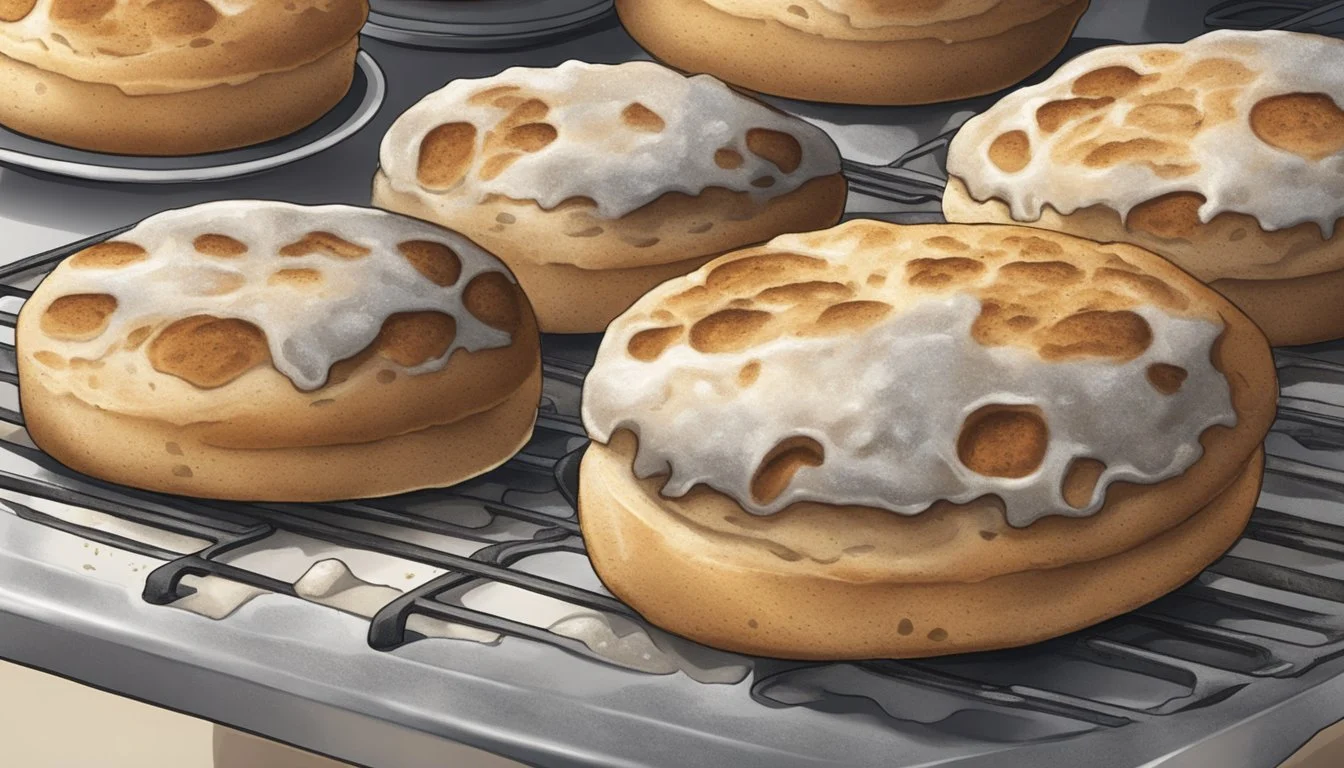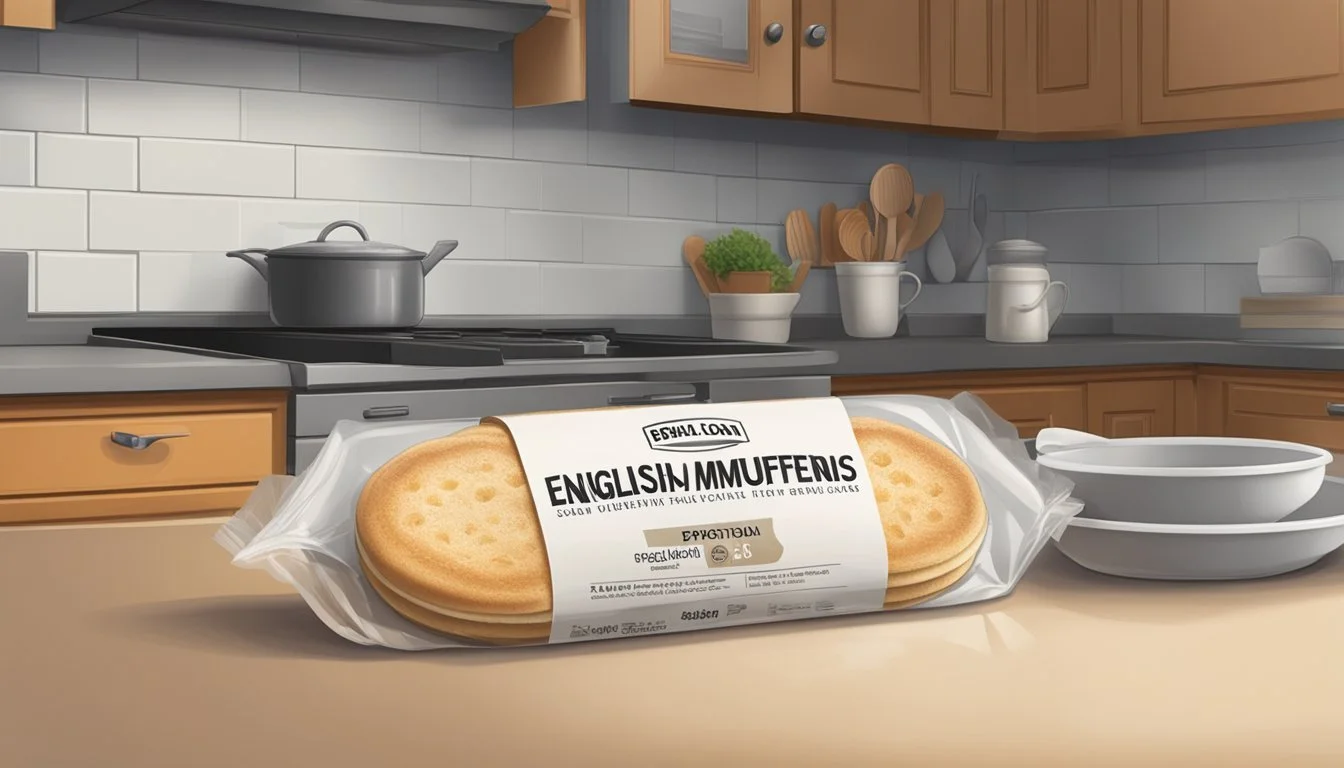Do English Muffins Go Bad?
Shelf Life and Storage Tips
Wondering if your English muffins have gone bad? You're not alone. English muffins are a breakfast staple, cherished for their versatility and nutritious value. Like all baked goods, they have a shelf life, and understanding their freshness is crucial for maintaining their quality.
Typically, English muffins last about two weeks when stored at room temperature. Properly stored, English muffins can remain safe to eat but may start to lose their freshness and nutritional value after this period. Signs of spoilage include the presence of mold, which often appears as dark or fuzzy spots.
Storing your English muffins properly can extend their shelf life. Freezing them can keep them good for up to three months. Beyond that, although they won't become unsafe to eat, their quality may decline, potentially affecting your breakfast experience. Keep an eye out for key indicators of spoilage to ensure you're consuming the freshest product possible.
Understanding English Muffins
English muffins are unique bread products known for their distinct texture, versatile uses, and range of varieties.
Composition and Varieties
English muffins are typically made from flour, water, sugar, salt, and yeast.
They have a spongy texture due to the use of yeast, which creates small air pockets within the dough. Whole Wheat options offer a healthier alternative with added fiber.
Homemade muffins can be customized with ingredients like honey or oats for extra flavor. They may also feature variations with added herbs or cheese, providing different taste profiles. The variety available ensures there is an English muffin to suit diverse dietary preferences and tastes.
Culinary Uses
English muffins are highly versatile and can be used in many culinary creations. They are ideal for toppings like jam, butter, or honey, making them a popular choice for breakfast.
They are also perfect for making sandwiches, especially the classic eggs Benedict. Mini pizzas, breakfast sandwiches, and even dessert options like muffin bread pudding showcase their adaptability.
As a snack or recipe ingredient, English muffins can be both simple and sophisticated. Their ability to adapt to sweet and savory applications makes them a must-have in any kitchen.
Shelf Life and Freshness
English muffins have varying shelf lives depending on storage conditions, ingredients, and added preservatives. Freshness is key to enjoying their taste and texture.
Factors Affecting Freshness
Several factors influence the freshness of English muffins. Storage conditions are critical; when stored in the pantry, they last up to five days, but in the refrigerator, they can remain fresh for up to two weeks. Freezing can extend their shelf life to six months.
Ingredients and preservatives like calcium propionate and sodium benzoate also play a role. These additives help extend the muffins' shelf life by preventing mold and bacterial growth. The expiration date on the package provides a guideline, although quality may decline past this date.
Determining Freshness
Identifying whether English muffins are stale or still good to eat is essential. Signs of freshness include a soft texture and pleasant smell. Stale or spoiled muffins will often show mold, have an off odor, or feel excessively dry.
Consumers are advised to check the expiration date and inspect the muffins visually and by smell. If any doubt arises, it is safer to discard them rather than risk consuming contaminated food. Proper storage can significantly maintain their quality and extend enjoyment.
Storage Guidelines
Proper storage of English muffins ensures they remain fresh and safe to eat for as long as possible. The following guidelines address various storage methods, from room temperature to refrigerated and frozen storage.
Room Temperature Storage
English muffins can be stored at room temperature for short periods. To maximize freshness, keep them in a cool, dry place away from direct sunlight. An airtight container or well-sealed plastic bag can help protect against moisture and mold. They typically last 2-4 days under these conditions.
Avoid: Humid environments, as moisture can accelerate mold growth.
Best Practices: Store in a breadbox or cabinet.
Refrigerating English Muffins
Refrigerating extends the shelf life of English muffins up to 3-4 days. Place them in an airtight container or wrap them tightly in plastic wrap or aluminum foil to prevent them from drying out or absorbing other odors from the fridge.
Tips: Always ensure they are tightly sealed.
Considerations: Quality may deteriorate, making them staler faster than if kept at room temperature.
Freezing English Muffins
For long-term storage, English muffins can be frozen for up to 3 months. When freezing, wrap each muffin in plastic wrap, aluminum foil, or place them in a heavy-duty freezer bag. This prevents freezer burn and maintains quality.
Thawing: Allow them to come to room temperature before toasting.
Precautions: Do not freeze muffins with toppings as these are more prone to spoilage.
These guidelines help ensure your English muffins stay fresh and tasty, whether stored for a few days or several months. Proper packaging significantly affects their longevity and quality.
Identifying Spoilage
English muffins can exhibit clear signs when they have gone bad. Key indicators include visible mold growth, discoloration, strange smells, and changes in texture.
Visible Signs of Spoilage
Mold is the most apparent sign that an English muffin has deteriorated. It typically appears as dark, black spots with a fuzzy, raised texture.
Discoloration is another indicator. Instead of the usual pale golden brown, the muffin may show an unusual change in color. This can indicate spoilage and potential mold growth even if it is not immediately visible.
Additionally, any form of staleness is a sign to consider. Muffins that have lost their softness and turned hard should be discarded.
Lastly, crumbling or excessive dryness suggests the muffin is no longer fresh and has likely gone bad.
Smell and Texture Changes
A significant off smell is a clear indicator of spoilage. If the English muffin has a foul or strange smell, it should be thrown away. Fresh muffins have a mild, slightly sweet aroma, whereas spoiled ones can smell musty or sour.
Changes in texture also signify spoilage. Fresh muffins have a soft, spongy texture. If the muffin feels slimy or excessively dry, it has likely gone stale or bad. These textural changes often accompany other spoilage signs like mold growth or discoloration, reinforcing the need to discard the product.
To ensure food safety, any English muffin showing these signs of spoilage should be thrown away immediately.
Safe Consumption Practices
Proper storage and timely discarding of English muffins are crucial to ensure they remain safe to eat. Ignoring signs of spoilage can lead to health risks due to the presence of harmful microorganisms.
When To Discard English Muffins
English muffins should be discarded if they exhibit signs of spoilage. Mould is a primary indicator, appearing as dark, fuzzy spots typically in black or green hues.
Discolouration such as changes from their usual pale golden brown to other colors suggests spoilage.
Unpleasant smells, especially sour or odd odors, signal that the muffins are no longer safe to consume. Staleness, while less dangerous, affects taste and texture, making them unappealing.
Health Risks of Consuming Spoiled Baked Goods
Consuming spoiled English muffins can pose several health risks. Moldy muffins contain mycotoxins, which can lead to respiratory issues and allergic reactions.
Ingesting these microorganisms can cause gastrointestinal problems like nausea, vomiting, and diarrhea.
Long-term exposure to mycotoxins impacts liver health and immune function. It’s crucial to always prioritize safety and discard any muffins showing signs of spoilage to avoid potential health hazards.
Maximizing Longevity
Maximizing the longevity of English muffins involves proper storage techniques and methods for revitalizing stale muffins. These practices ensure optimal taste, flavor, and texture are maintained.
Proper Storage Techniques
Storing English muffins correctly is crucial to preserving their freshness. When kept in the pantry, they can last up to five days. To extend this period, refrigerate them, allowing them to stay fresh for up to two weeks. For even longer storage, place them in the freezer, where they can last for six months.
Use airtight containers or resealable bags to keep moisture out and prevent staleness. Label containers with the date of storage to monitor shelf life. Ensuring muffins are well-wrapped protects against freezer burn, which can affect both texture and flavor.
Revitalizing Stale English Muffins
To make stale English muffins palatable again, consider different revitalization techniques. Toasting is a simple method that can restore some crispness and warmth to the muffin. Slice the muffin and toast it lightly until it regains a desirable texture.
Microwaving is another option to revive staleness. Wrap the muffin in a slightly damp paper towel and microwave it on medium heat for 10-15 seconds. This process helps to rehydrate the bread without making it overly soggy.
For a more thorough method, lightly brush the muffins with water or milk before toasting. This adds moisture back into the bread, counteracting dryness and enhancing the flavor.
Frequently Asked Tips
When dealing with English muffins, it's essential to follow specific guidelines to maintain their best quality, whether they are store-bought or homemade. Key aspects include understanding correct storage methods, recognizing signs of spoilage, and implementing best practices for packaging and handling.
Best Practices for Commercial English Muffins
Purchase and Storage: English muffins should be purchased in packaging that is sealed and not expired. Look for brands that use a resealable bag to help maintain freshness.
Countertop Storage: Keep them in a cool, dry place, away from direct sunlight. Muffins stored on a countertop typically last about a week.
Freezing and Resealing: For extended storage, freeze English muffins. Wrap them individually in aluminum foil or parchment paper before placing them in a freezer bag. This prevents freezer burn and maintains the muffins' texture.
Recognizing Spoilage: Mold is a clear indicator that an English muffin has gone bad. Look for dark spots with a fuzzy, raised texture. Always discard muffins with visible mold to avoid health risks.
Handling Homemade English Muffins
Packaging Leftovers: Wrap leftover homemade English muffins in parchment paper and store them in an airtight container. Proper packaging prevents air exposure, which can lead to staleness.
Freezer Storage: For longer shelf life, freeze homemade muffins. Separate them with parchment paper layers before placing them in a resealable bag. This ensures they don't stick together.
Thawing Techniques: Thaw frozen muffins at room temperature or use a microwave on a low setting. Avoid refreezing them as this can degrade their quality.
Checking Freshness: Squeeze the muffin gently; it should spring back and not feel overly dense. A stale muffin often has a harder, less pliable texture.
By adhering to these tips, the lifespan and quality of English muffins can be significantly extended, ensuring they remain a delightful addition to any meal.








